Philipp Mondorf
Grokking ExPLAIND: Unifying Model, Data, and Training Attribution to Study Model Behavior
May 26, 2025Abstract:Post-hoc interpretability methods typically attribute a model's behavior to its components, data, or training trajectory in isolation. This leads to explanations that lack a unified view and may miss key interactions. While combining existing methods or applying them at different training stages offers broader insights, these approaches usually lack theoretical support. In this work, we present ExPLAIND, a unified framework that integrates all three perspectives. First, we generalize recent work on gradient path kernels, which reformulate models trained by gradient descent as a kernel machine, to more realistic training settings. Empirically, we find that both a CNN and a Transformer model are replicated accurately by this reformulation. Second, we derive novel parameter- and step-wise influence scores from the kernel feature maps. We show their effectiveness in parameter pruning that is comparable to existing methods, reinforcing their value for model component attribution. Finally, jointly interpreting model components and data over the training process, we leverage ExPLAIND to analyze a Transformer that exhibits Grokking. Among other things, our findings support previously proposed stages of Grokking, while refining the final phase as one of alignment of input embeddings and final layers around a representation pipeline learned after the memorization phase. Overall, ExPLAIND provides a theoretically grounded, unified framework to interpret model behavior and training dynamics.
Enabling Systematic Generalization in Abstract Spatial Reasoning through Meta-Learning for Compositionality
Apr 02, 2025Abstract:Systematic generalization refers to the capacity to understand and generate novel combinations from known components. Despite recent progress by large language models (LLMs) across various domains, these models often fail to extend their knowledge to novel compositional scenarios, revealing notable limitations in systematic generalization. There has been an ongoing debate about whether neural networks possess the capacity for systematic generalization, with recent studies suggesting that meta-learning approaches designed for compositionality can significantly enhance this ability. However, these insights have largely been confined to linguistic problems, leaving their applicability to other tasks an open question. In this study, we extend the approach of meta-learning for compositionality to the domain of abstract spatial reasoning. To this end, we introduce $\textit{SYGAR}$-a dataset designed to evaluate the capacity of models to systematically generalize from known geometric transformations (e.g., translation, rotation) of two-dimensional objects to novel combinations of these transformations (e.g., translation+rotation). Our results show that a transformer-based encoder-decoder model, trained via meta-learning for compositionality, can systematically generalize to previously unseen transformation compositions, significantly outperforming state-of-the-art LLMs, including o3-mini, GPT-4o, and Gemini 2.0 Flash, which fail to exhibit similar systematic behavior. Our findings highlight the effectiveness of meta-learning in promoting systematicity beyond linguistic tasks, suggesting a promising direction toward more robust and generalizable models.
The Validation Gap: A Mechanistic Analysis of How Language Models Compute Arithmetic but Fail to Validate It
Feb 17, 2025Abstract:The ability of large language models (LLMs) to validate their output and identify potential errors is crucial for ensuring robustness and reliability. However, current research indicates that LLMs struggle with self-correction, encountering significant challenges in detecting errors. While studies have explored methods to enhance self-correction in LLMs, relatively little attention has been given to understanding the models' internal mechanisms underlying error detection. In this paper, we present a mechanistic analysis of error detection in LLMs, focusing on simple arithmetic problems. Through circuit analysis, we identify the computational subgraphs responsible for detecting arithmetic errors across four smaller-sized LLMs. Our findings reveal that all models heavily rely on $\textit{consistency heads}$--attention heads that assess surface-level alignment of numerical values in arithmetic solutions. Moreover, we observe that the models' internal arithmetic computation primarily occurs in higher layers, whereas validation takes place in middle layers, before the final arithmetic results are fully encoded. This structural dissociation between arithmetic computation and validation seems to explain why current LLMs struggle to detect even simple arithmetic errors.
Understanding When Tree of Thoughts Succeeds: Larger Models Excel in Generation, Not Discrimination
Oct 24, 2024
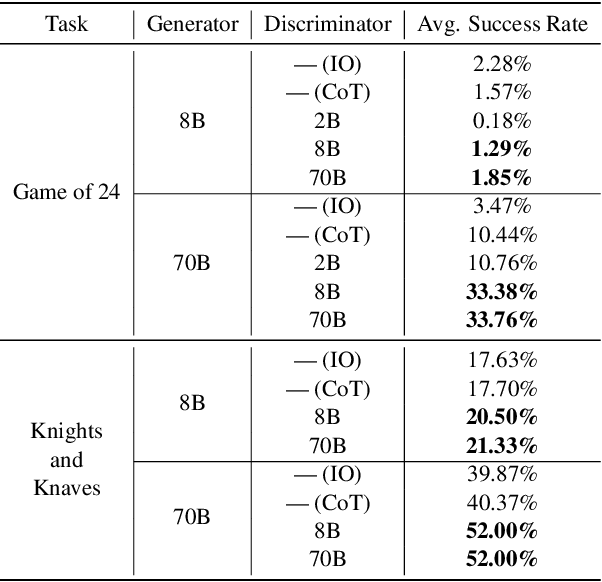

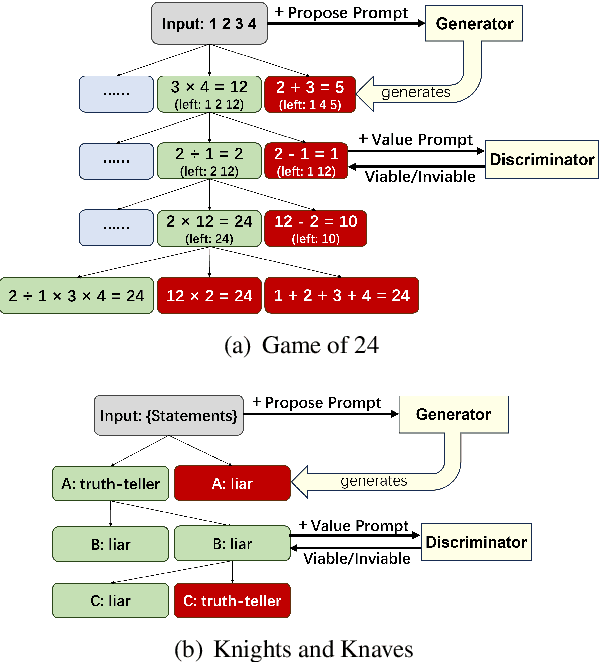
Abstract:Tree of Thoughts (ToT) is a reasoning strategy for Large Language Models (LLMs) that employs a generator to suggest reasoning steps and a discriminator to decide which steps to implement. ToT demonstrates strong performance on reasoning tasks, often surpassing simple methods such as Input-Output (IO) prompting and Chain-of-Thought (CoT) reasoning. However, ToT does not consistently outperform such simpler methods across all models, leaving large knowledge gaps on the conditions under which ToT is most beneficial. In this paper, we analyze the roles of the generator and discriminator separately to better understand the conditions when ToT is beneficial. We find that the generator plays a more critical role than the discriminator in driving the success of ToT. Scaling the generator leads to notable improvements in ToT performance, even when using a smaller model as the discriminator, whereas scaling the discriminator with a fixed generator yields only marginal gains. Our results show that models across different scales exhibit comparable discrimination capabilities, yet differ significantly in their generative performance for ToT.
Circuit Compositions: Exploring Modular Structures in Transformer-Based Language Models
Oct 02, 2024Abstract:A fundamental question in interpretability research is to what extent neural networks, particularly language models, implement reusable functions via subnetworks that can be composed to perform more complex tasks. Recent developments in mechanistic interpretability have made progress in identifying subnetworks, often referred to as circuits, which represent the minimal computational subgraph responsible for a model's behavior on specific tasks. However, most studies focus on identifying circuits for individual tasks without investigating how functionally similar circuits relate to each other. To address this gap, we examine the modularity of neural networks by analyzing circuits for highly compositional subtasks within a transformer-based language model. Specifically, given a probabilistic context-free grammar, we identify and compare circuits responsible for ten modular string-edit operations. Our results indicate that functionally similar circuits exhibit both notable node overlap and cross-task faithfulness. Moreover, we demonstrate that the circuits identified can be reused and combined through subnetwork set operations to represent more complex functional capabilities of the model.
LLMs instead of Human Judges? A Large Scale Empirical Study across 20 NLP Evaluation Tasks
Jun 26, 2024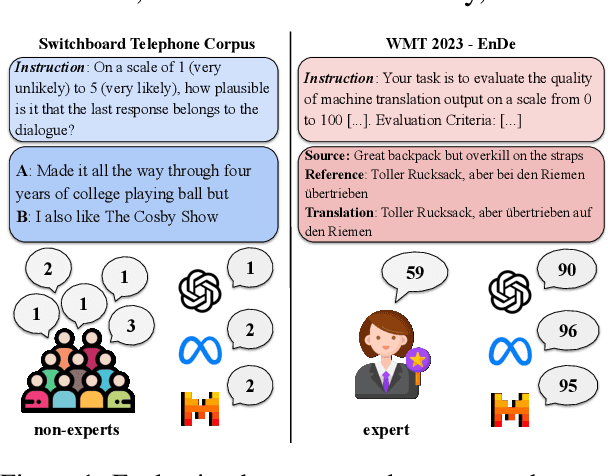
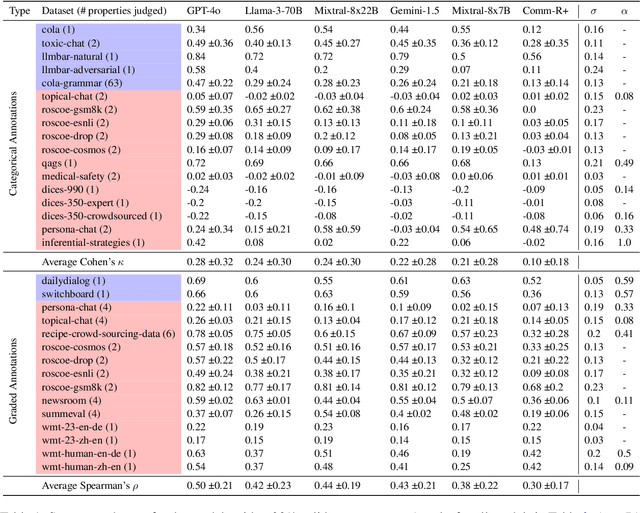
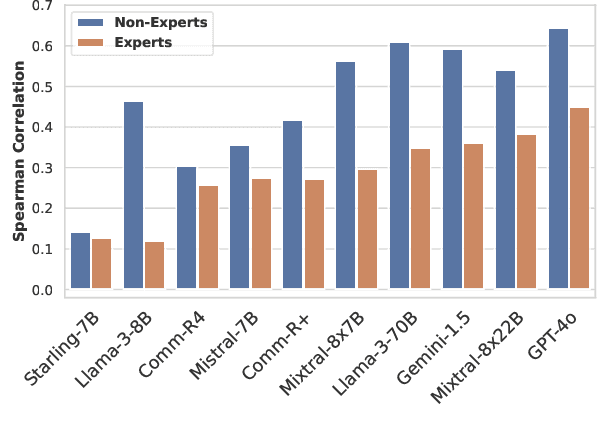
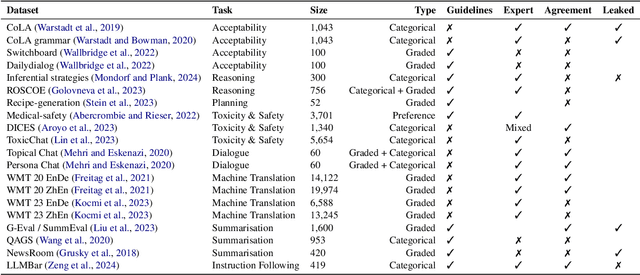
Abstract:There is an increasing trend towards evaluating NLP models with LLM-generated judgments instead of human judgments. In the absence of a comparison against human data, this raises concerns about the validity of these evaluations; in case they are conducted with proprietary models, this also raises concerns over reproducibility. We provide JUDGE-BENCH, a collection of 20 NLP datasets with human annotations, and comprehensively evaluate 11 current LLMs, covering both open-weight and proprietary models, for their ability to replicate the annotations. Our evaluations show that each LLM exhibits a large variance across datasets in its correlation to human judgments. We conclude that LLMs are not yet ready to systematically replace human judges in NLP.
Liar, Liar, Logical Mire: A Benchmark for Suppositional Reasoning in Large Language Models
Jun 18, 2024Abstract:Knights and knaves problems represent a classic genre of logical puzzles where characters either tell the truth or lie. The objective is to logically deduce each character's identity based on their statements. The challenge arises from the truth-telling or lying behavior, which influences the logical implications of each statement. Solving these puzzles requires not only direct deductions from individual statements, but the ability to assess the truthfulness of statements by reasoning through various hypothetical scenarios. As such, knights and knaves puzzles serve as compelling examples of suppositional reasoning. In this paper, we introduce $\textit{TruthQuest}$, a benchmark for suppositional reasoning based on the principles of knights and knaves puzzles. Our benchmark presents problems of varying complexity, considering both the number of characters and the types of logical statements involved. Evaluations on $\textit{TruthQuest}$ show that large language models like Llama 3 and Mixtral-8x7B exhibit significant difficulties solving these tasks. A detailed error analysis of the models' output reveals that lower-performing models exhibit a diverse range of reasoning errors, frequently failing to grasp the concept of truth and lies. In comparison, more proficient models primarily struggle with accurately inferring the logical implications of potentially false statements.
Beyond Accuracy: Evaluating the Reasoning Behavior of Large Language Models -- A Survey
Apr 02, 2024Abstract:Large language models (LLMs) have recently shown impressive performance on tasks involving reasoning, leading to a lively debate on whether these models possess reasoning capabilities similar to humans. However, despite these successes, the depth of LLMs' reasoning abilities remains uncertain. This uncertainty partly stems from the predominant focus on task performance, measured through shallow accuracy metrics, rather than a thorough investigation of the models' reasoning behavior. This paper seeks to address this gap by providing a comprehensive review of studies that go beyond task accuracy, offering deeper insights into the models' reasoning processes. Furthermore, we survey prevalent methodologies to evaluate the reasoning behavior of LLMs, emphasizing current trends and efforts towards more nuanced reasoning analyses. Our review suggests that LLMs tend to rely on surface-level patterns and correlations in their training data, rather than on genuine reasoning abilities. Additionally, we identify the need for further research that delineates the key differences between human and LLM-based reasoning. Through this survey, we aim to shed light on the complex reasoning processes within LLMs.
Comparing Inferential Strategies of Humans and Large Language Models in Deductive Reasoning
Feb 20, 2024Abstract:Deductive reasoning plays a pivotal role in the formulation of sound and cohesive arguments. It allows individuals to draw conclusions that logically follow, given the truth value of the information provided. Recent progress in the domain of large language models (LLMs) has showcased their capability in executing deductive reasoning tasks. Nonetheless, a significant portion of research primarily assesses the accuracy of LLMs in solving such tasks, often overlooking a deeper analysis of their reasoning behavior. In this study, we draw upon principles from cognitive psychology to examine inferential strategies employed by LLMs, through a detailed evaluation of their responses to propositional logic problems. Our findings indicate that LLMs display reasoning patterns akin to those observed in humans, including strategies like $\textit{supposition following}$ or $\textit{chain construction}$. Moreover, our research demonstrates that the architecture and scale of the model significantly affect its preferred method of reasoning, with more advanced models tending to adopt strategies more frequently than less sophisticated ones. Importantly, we assert that a model's accuracy, that is the correctness of its final conclusion, does not necessarily reflect the validity of its reasoning process. This distinction underscores the necessity for more nuanced evaluation procedures in the field.
 Add to Chrome
Add to Chrome Add to Firefox
Add to Firefox Add to Edge
Add to Edge